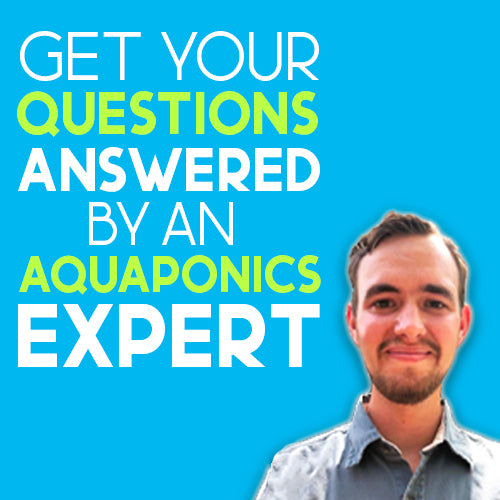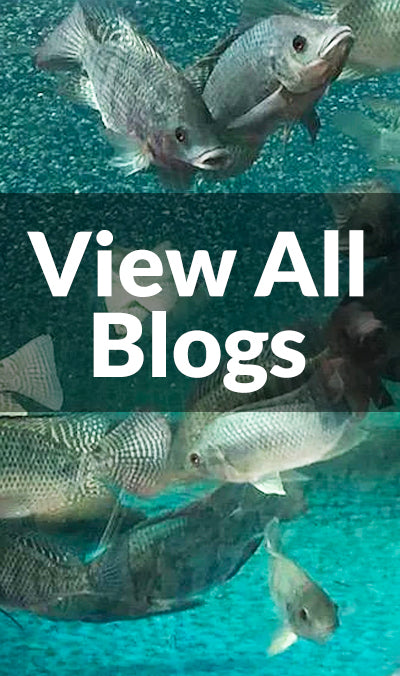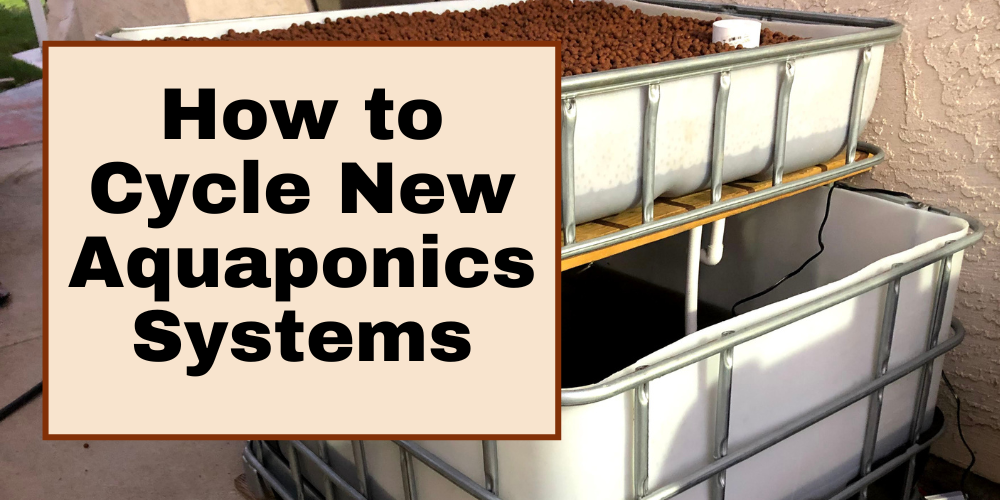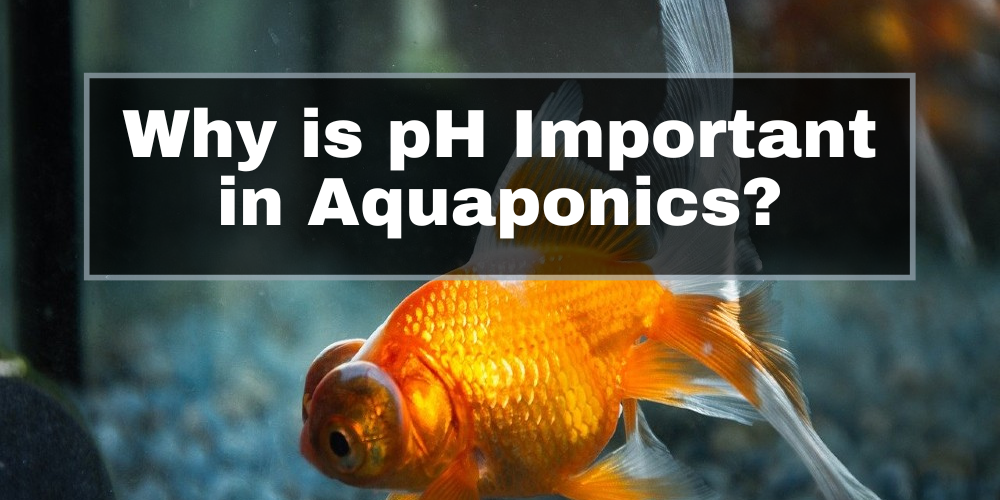When most people think of aquaponics, they imagine growing leafy greens, herbs, or vegetables alongside edible fish like tilapia. But aquaponics isn’t limited to food production, it can also be a stunning and relaxing display when you introduce ornamental fish.
Ornamental fish not only provide the nutrients your plants need but also bring color, personality, and visual appeal to your setup. Imagine a vibrant aquaponics system filled with shimmering goldfish, playful guppies, or elegant koi, a system that’s not just productive, but also beautiful to look at every day.
In this guide, we’ll explore the best ornamental fish for aquaponics systems, the factors to consider before choosing, and how to care for them so both your fish and plants thrive.
If you’re new to aquaponics or still in the early stages of learning, don’t worry. We’ll keep things simple, beginner-friendly, and practical.
Why Use Ornamental Fish in Aquaponics?
Most aquaponics systems are designed with edible fish like tilapia, catfish, or trout in mind. But not everyone sets up aquaponics for food production. Sometimes the goal is a beautiful, low-maintenance system that doubles as a relaxing centerpiece for your home, office, or garden. That’s where ornamental fish truly shine.
The Benefits of Using Ornamental Fish in Aquaponics
1. Visual Appeal:
Ornamental fish like goldfish, koi, and guppies add color, movement, and beauty to your system. They transform aquaponics from a food system into a living piece of art.
2. Beginner-Friendly:
Many ornamental species are hardy, adaptable, and easy to care for, making them ideal for beginners who are just learning how to balance water, plants, and fish.
3. Stress Relief:
Watching ornamental fish swim has been shown to reduce stress and improve mood, a great bonus for those who want a more therapeutic experience from their aquaponics setup.
4. Same Nutrient Benefits:
Just like edible fish, ornamental fish produce waste that becomes nutrient-rich food for your plants. You get the same sustainability benefits, without needing to harvest the fish.
5. Family & Education-Friendly:
Ornamental fish make aquaponics more engaging for kids and families. They’re a fantastic way to introduce children to science, biology, and sustainability in a fun, hands-on way.
Factors to Consider Before Choosing Ornamental Fish
Before you head to the pet store, here are a few important factors to keep in mind:
1. Climate and Water Temperature
- Some fish, like goldfish and koi, thrive in cooler outdoor ponds, while others like guppies and mollies prefer warmer, tropical conditions.
- Always match your fish species to your local climate or invest in a heater orchiller to maintain stable water conditions.
2. System Size and Stocking Density
- Larger fish like koi need plenty of space, while guppies or bettas can thrive in smaller systems.
- Overstocking can stress fish, cause ammonia spikes, and harm plants.
3. Water Parameters (pH, Ammonia, Nitrites, Nitrates)
- Most ornamental fish do well in a pH range of 6.8–7.5.
- Stable water chemistry is crucial to fish health and plant growth.
- Beginners often underestimate the importance of regular water testing.
4. Compatibility with Other Fish
- Peaceful species like guppies and mollies do well in groups.
- Aggressive fish like some bettas may need to live alone or in carefully chosen setups.
5. Feeding and Maintenance
- Different species have different diets (flakes, pellets, live food).
- Overfeeding is one of the most common mistakes beginners make, leading to water quality issues.
The Best Ornamental Fish for Aquaponics Systems
Below is the list of ornamental fish you can raise in your aquaponics system.
1. Goldfish
- Ideal pH range: between 7.2 to 7.6
- Ideal Temperature Range: between 65°F and 72° F
- Ideal Fish Tank Size: Goldfish need space to swim around, so it is essential to use a longer and bigger tank if you’re planning to keep more than one fish.
- Food Requirements: Goldfish are omnivorous, but it is recommended to feed them with pelleted fish feeds that are high in protein.
Goldfish is one of the most popular ornamental fish in aquaponics. Not only are they inexpensive and look great in your home, but they are also a hardy fish species that is easy to take care of. Goldfish can survive in a wide range of temperatures, water conditions, and changes in water pH levels. They also produce large amounts of waste, which provides plenty of nutrients to your aquaponics plants. Here are the reasons why goldfish are ideal for aquaponics:
- Easy to breed:Goldfish are hardy and easy to breed, which is an advantage in aquaponics systems.
- Readily available:Goldfish of different sizes are readily available all year round worldwide.
- Affordable:Compared to other aquaponics fish species, most goldfish are inexpensive. Their food is all cheaper and available globally.
- Water quality tolerant:Goldfish are resistant to poor water quality conditions.
- Great indoors:Goldfish are great for smaller indoor aquaponics systems. Their beautiful colors can complement any indoor decorations and setting.

2. Angelfish
- Ideal pH range: between 6.8 and 7.8
- Ideal Temperature Range: between 78-86°F.
- Ideal Fish Tank Size: Angelfish can grow quite large and requires an aquarium of at least 55 gallons or larger.
- Food Requirements: Angelfish feeds at the surface or mid-water, but they also swim to the bottom to look for worms and other small crustaceans. They are omnivores and thrive on flakes. They can also be fed with frozen and live foods to help induce spawning.
Angelfish is another popular ornamental aquaponics fish because of its long and majestic fins, graceful swimming behavior, and ease of breeding. Angelfish belong to the family of Cichlidae. They look good in aquariums and are admired for their classy swimming behavior.
When buying angelfish, look for ones that are the size of half a dollar coin (2-3cm). Part of the fun of keeping angelfish in your aquaponics system is watching them grow from a young fish to full adulthood. While they are slender fish, don't pick overly thin ones. Look for a young, strong angelfish with a thicker head and meaty body. Also, avoid buying any fish with cloudy or damaged eyes. Buy only the healthiest ones possible for the best chance of a successful system.

3. Bloodfin Tetras
- Ideal pH range: between 6.0 to 8.0
- Ideal Temperature Range: between 70° -80° F
- Ideal Fish Tank Size: Minimum 30 gallons, The Bloodfin tetras, are easy to care for. These fish species appreciate if their tank or aquarium is decorated to imitate their natural environment. So you can add some driftwood, rocks, twisted roots, or some aquarium plants to make the aquarium like a neutral habitat for them.
- Food Requirements: They eat flake food, but you can also feed them with worms, shrimps, and frozen food supplements to ensure the best nutrition. Bloodfin Tetras are very active and need to eat more frequently than other fish since they constantly burn the calories they consume. Feed them 2-3 times a day on whatever they can eat within 2-3 minutes for best feeding results.
These small fish species with silver bodies and red fins are stunning to look at. Bloodfin Tetras are also extremely hardy fish and are adaptable to slight changes in the water quality as long as they have enough swimming space and vegetation. They are also very easy to please, making them an ideal ornamental fish to raise in small aquaponics systems.
Bloodfin tetras do well in slow-moving water, which mimics their natural habitat. They can live for a period of 5 to 8 years. They are peaceful and social creatures; they are schooling fish and thrive in a group of six or more. So if you're planning to raise bloodfin tetras, ensure that you have a large enough tank as they tend to nip each other if they don't have enough space. Bloodfin tetras are active breeders who produce a lot of young fish but will also eat their own young if given a chance.

4. Danios
- Ideal pH range: between 7.0 and 7.8
- Ideal Temperature Range: between 70° and 78°F
- Ideal Fish Tank Size: Longer tanks with enough swimming room are the best for danios. Most danios are surface-oriented and show their best colors in a well-decorated aquarium. Danios are best kept in groups of at least six or more.
- Food Requirements: omnivorous and thrive on flakes and pellets. They can also be fed with frozen and live foods as treats or help induce spawning. Feed them twice a day on what they can consume in 2 minutes.
Danios are another hardy small fish species. They have bright stripes and can do well in almost any water condition, making them an excellent fish for small aquaponics systems. They are active fish species and like to live in groups. Most danios grow to less than 2," and they are typically surface-oriented.

5. Koi
- Ideal pH range: 7.5
- Ideal Temperature Range: between 35° to 85°F.
- Ideal Fish Tank Size: av pond or at least a 1000-gallon fish tank can raise 5 to 6 koi.
- Food Requirements: Koi are omnivorous fish species. They are not difficult to feed as they eat plants and animal matter. But for their optimum health, feeding them with flakes and pellets is the best because it provides them with a well-balanced diet. Feed koi once a day for what they can consume in five minutes.
The Japanese Koi is one of the most popular ornamental fish for aquaponics systems for several reasons. Koi are highly adaptable, have a long lifespan, and are resistant to parasites and diseases. This fish species has a lot of varieties and is in various shades of orange, white, yellow, black, etc. Koi are omnivorous and can feed on algae, plant matter, and fallen debris.
Koi can live on fish tanks, but they are often raised in ponds. The most popular breed of Koi for aquaponics systems is the Gosanke breed, which includes the Kohaku, Showa, Sanshoku, and Taisho Sanshoku varieties.

6. Guppies
- Ideal pH Range: 6.8 – 7.8
- Temperature: 72–82°F (22–28°C).
- Tank Size: A minimum of 10 gallons for a small colony, but 20–40 gallons is ideal in aquaponics for stable water chemistry and plant nutrient supply.
- Stocking Density: About 1 inch of fish per gallon of water is a safe guideline, though guppies breed quickly, so plan for population growth
-
Food Requirements: Guppies are omnivores and benefit from a varied diet:
- Staple Food: High-quality tropical fish flakes or micro pellets.
- Protein Boosts: Live or frozen foods such as brine shrimp, mosquito larvae, and bloodworms.
- Vegetable Matter: Crushed peas, spirulina flakes, or blanched spinach for balanced nutrition. Feed small amounts 2–3 times per day, only what they can eat in about 2 minutes, to prevent overfeeding and water quality issues.
Guppies are hardy, colorful, and fast-breeding fish that adapt well to aquaponics systems. They’re especially ideal for beginners because they tolerate a wide range of water conditions and provide a steady source of nutrients for plants. Their small size also makes them perfect for smaller systems or indoor setups.

7. Bettas
- Ideal pH Range: 6.5 – 7.5
- Temperature: 75–82°F (24–28°C)
- Tank Size: At least 5 gallons per fish, but in aquaponics, 10–20 gallons is better for stable water chemistry. Bettas are territorial, so only one male should be kept per tank, though females can sometimes be kept in groups with plenty of hiding spots.
- Stocking Density: Best kept alone or with peaceful tank mates like snails or shrimp in aquaponics systems. Avoid multiple males in the same system to prevent aggression.
-
Food Requirements:Bettas are primarily carnivores with a high protein requirement:
- Staple Food: Betta-specific pellets or flakes high in protein.
- Protein Boosts: Live or frozen foods such as brine shrimp, bloodworms, and daphnia.
- Vegetable Matter: Minimal, small amounts of spirulina-based flakes can be offered occasionally. Feed once or twice daily, only as much as they can eat in 2–3 minutes, to avoid overfeeding and maintain water quality.

How to Care for Ornamental Fish in Aquaponics
Caring for ornamental fish in an aquaponics systemis not complicated, but it does require consistency. Healthy fish mean healthy plants, so learning the basics of fish care is essential.
Here are the key areas to focus on:
1. Feeding Routines
- Feed small amounts once or twice a day, only what the fish can eat in 2–3 minutes.
- Overfeeding leads to excess waste, ammonia spikes, and stressed plants.
- Choose high-quality flakes or pellets suited for your species (goldfish, koi, guppies, etc.).
2. Monitoring Water Quality
- Test water weekly for pH, ammonia, nitrite, and nitrate levels.
- Keep pH between 6.8 and 7.5 for most ornamental species.
- Stable water chemistry is important.
3. Tank & System Maintenance
- Perform partial water changes if ammonia or nitrite levels spike.
- Keep filters and biofilters clean but avoid sterilizing, beneficial bacteria are essential.
- Remove uneaten food and plant debris regularly.
4. Disease Prevention
- Quarantine new fish before adding them to your system.
- Look for early signs of disease: clamped fins, lethargy, spots, or erratic swimming.
- Healthy water quality is your first defense against illness.
5. Reducing Stress
- Avoid overcrowding; give each species enough space.
- Pair compatible species together, for example, guppies and mollies do well in groups, while male bettas prefer solitude.
- Provide hiding spots (plants, pipes, decorations) to make fish feel secure.
Common Mistakes to Avoid with Ornamental Fish in Aquaponics
Even though ornamental fish are generally hardy, there are a few pitfalls beginners often face. Avoiding these mistakes will save you time, money, and frustration and ensure your system thrives.
1. Overstocking the System
- Adding too many fish at once causes stress, oxygen depletion, and dangerous ammonia spikes.
- Always start small and gradually increase your fish population as your biofilter matures.
2. Choosing Incompatible Species
- Not all ornamental fish get along. For example, male bettas are territorial and may fight with other fish.
- Do a little research before mixing species, peaceful fish like guppies and mollies are great community choices.
3. Ignoring Water Parameters
- Skipping regular water tests is one of the fastest ways to run into problems.
- Even hardy fish like goldfish can’t survive long in toxic water conditions.
4. Overfeeding
- More food means healthier fish. Uneaten food sinks, rots, and poisons your water.
- Stick to small, consistent feedings that your fish can finish quickly.
5. Lack of System Cycling
- Adding fish to a brand-new system before beneficial bacteria establish can be deadly.
- Always cycle your system first so fish waste is safely converted into plant nutrients.
Conclusion
Ornamental fish aren’t just eye-catching additions, they can also make your aquaponics system more enjoyable, resilient, and family-friendly. From hardy goldfish and koi to colorful guppies, mollies, and bettas, there’s a wide variety of species to choose from depending on your climate, system size, and experience level.
The key to success is keeping things balanced: the right fish, the right plants, and a system designed to support them both. When you understand how these pieces fit together, your aquaponics setup becomes more than just a growing system, it becomes a living ecosystem that’s both beautiful and productive.






Leave a comment (all fields required)